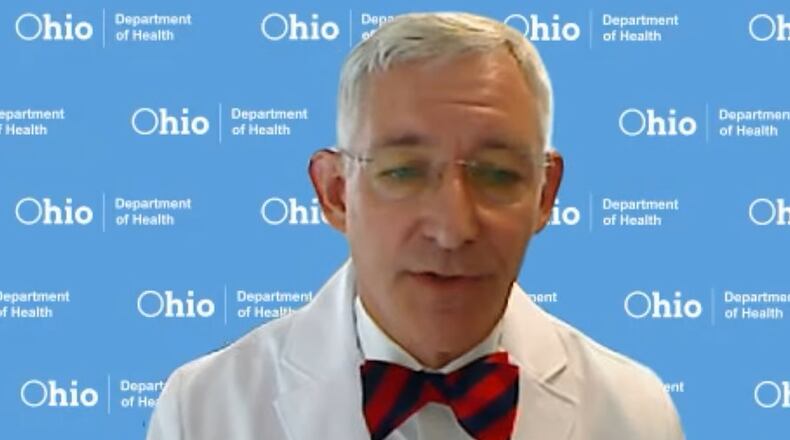Required immunizations for school in Ohio protect children against 10 preventable diseases, including diphtheria, tetanus, pertussis (whooping cough), polio, measles, mumps, rubella, hepatitis B, varicella (chicken pox) and meningitis.
During the 2020-2021 and 2021-2022 school years, immunizations dropped, Vanderhoff said, though some of those delays in childhood vaccination schedules could have been due to missed well-child doctor visits during the pandemic.
Even though vaccinations started to pick back up during the last school year, the state still experienced a measles outbreak impacting 85 children, mostly in central Ohio. About 40% of the impacted children had to be hospitalized, Vanderhoff said. There were no deaths from this outbreak.
“This is a bad illness, particularly for very young children,” Vanderhoff said.
Vanderhoff addressed the measles, mumps and rubella (MMR) vaccine and its debunked link to autism, saying the study this myth stemmed from approximately 25 years ago was disproven and retracted in its original publication, the Lancet. An investigation found the authors of the study “had acted unethically and had shown callous disregard for the children involved in their study,” Vanderhoff said.
“The fact is that vaccines substantially reduce your risk of developing numerous serious illnesses and are very practical and very important health interventions that we all can trust,” Vanderhoff said.
If you do not have health insurance, the Vaccines for Children program is a federally-funded program overseen by CDC and administered in Ohio by the Ohio Department of Health. The Vaccines for Children program supplies vaccine at no cost to public and private health care providers who enroll and agree to immunize eligible children in their medical practice or clinic. Health Care Providers interested in enrolling in the program should contact the Ohio Department of Health Immunization Program at 1-800-282-0546.
On Monday, the U.S. Food and Drug Administration approved a vaccine, Beyfortus, for the prevention of respiratory syncytial virus (RSV) lower respiratory tract disease in infants born during or entering their first RSV season, as well as in children up to 24 months of age who remain vulnerable to severe RSV disease through their second RSV season.
“RSV can cause serious disease in infants and some children and results in a large number of emergency department and physician office visits each year,” said Dr. John Farley, director of the Office of Infectious Diseases in the FDA’s Center for Drug Evaluation and Research. “Today’s approval addresses the great need for products to help reduce the impact of RSV disease on children, families and the health care system.”
Health providers are expected to receive advice from the Centers for Disease Control’s advisory committee on immunization practices with this new vaccine sometime in August, Vanderhoff said.
“RSV is a serious respiratory virus that flared up in near record numbers last fall here in Ohio and which nationally is the leading cause of hospitalization in infants under one year of age,” Vanderhoff said.
Parents should talk with their children’s doctors and health providers if they have hesitancy toward any of the required immunizations for school, said Dr. Douglas Harley, president of the Ohio Academy of Family Physicians.
“We encourage developing those relationships with patients because that’s how you build trust,” Harley said.
With measles specifically, worldwide, there 36 cases of measles per 1 million persons reported each year and about 134,200 die. For every 1,000 children who get measles, one or two will die from it, according to the CDC.
“I think we have to play the odds, and the odds are definitely in our favor with vaccines,” Harley said.
Other safety concerns should be taken into consideration ahead of school time, including making sure children have a safe route to school and protective gear if they bike to school.
“Parents should practice the walk or the bike ride to school or going to the bus stop before that first day of school,” Vanderhoff said.
Parents should also have conversations about the risks from vaping with their children, said Dr. Sara M. Bode, a primary care pediatrician and medical director of Nationwide Children’s Hospital’s School-Based Health Services. About one in four teens and one in 10 middle school children have already tried vaping, she said.
“Vaping is on the rise in kids. It’s an issue we take very seriously and discuss at each and every visit with our teens and with families,” Bode said. “Kids are exposed to a lot these days, and we have to have these conversations.”
About the Author

